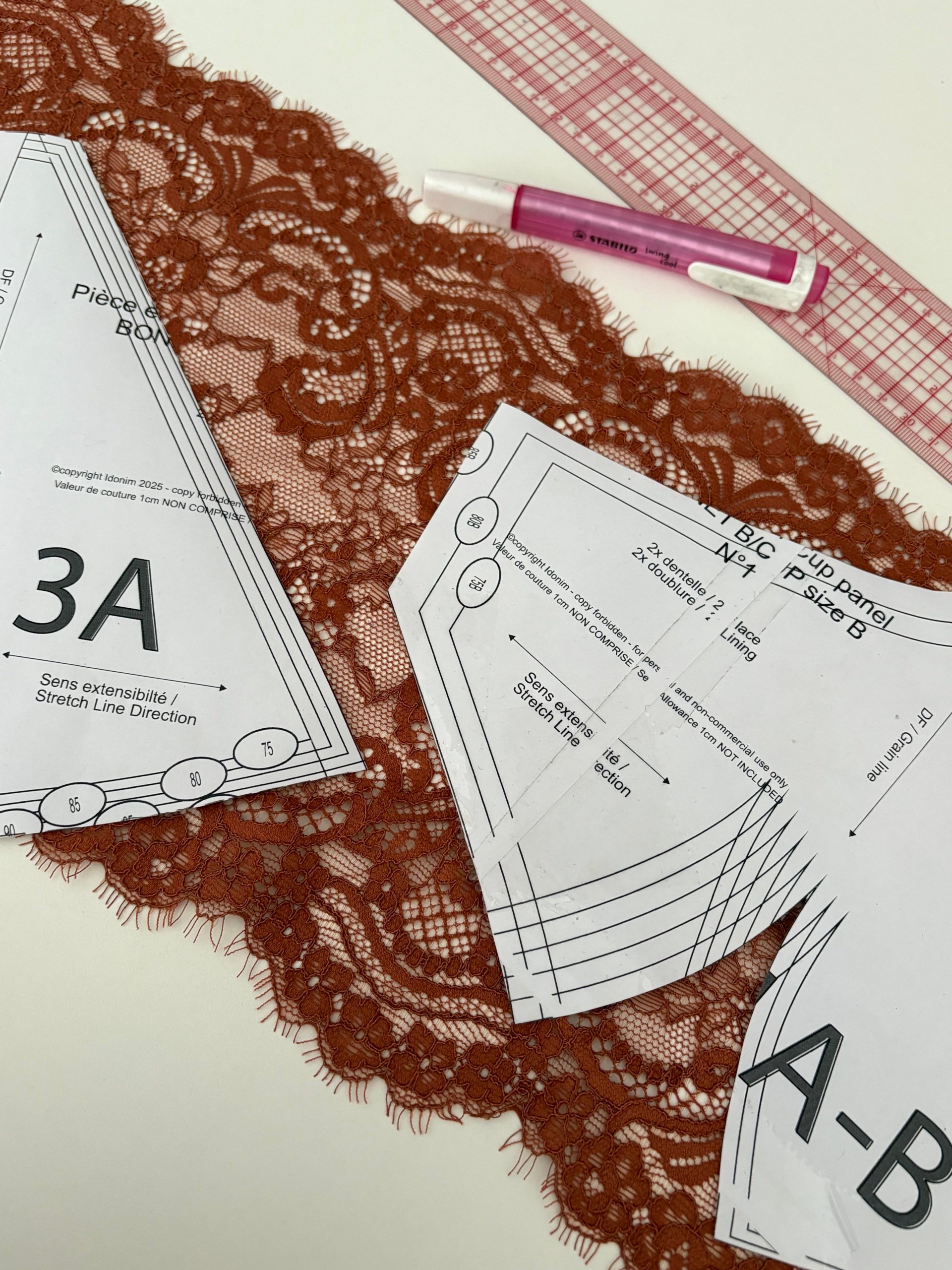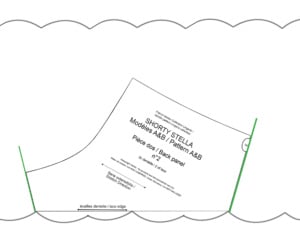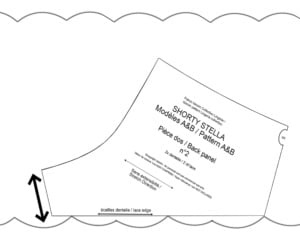
Lace, the delicate fabric of choice for your most flirtatious lingerie!
With floral or geometric motifs that are as subtle as they are sexy ... WE LOVE THE EFFECT!
Lace is an openwork fabric with no weft or warp. Almost any fibre can be used in its manufacture, including silk, linen, nylon and/or elastane. Depending on its composition, it can be stable or stretchy.
It is made in a pattern and often has jagged edges called scales or festoons ...
When making lingerie or any other sewing project, incorporating lace into your creations requires particular attention to its placement and cutting.
I recommend that you look closely at the rhythm of the scales: where the top and bottom of the scales are. I recommend cutting off piece by piece to achieve perfect symmetry.
Depending on the rhythm, more or less pronounced, of the lace scales, you will need to find the most appropriate position to place your pattern pieces.
The assembly points should always be placed at the same level as the scales.
Let's take the example of the back on panties.
- Place the pattern piece in question with both ends flush on the scales. In the example, the end of the pattern is placed in a hollow, but this is not compulsory - the end can be anywhere on the edge of the scale. as long as you're at the end of it.
The seam lines shown in green should end at the end of the lace when assembled.
- Once in place, add the seam allowance with the exception of the serged edge.
In the same way, you can create:
- lace inserts on knickers, bodysuits, bras, etc.
- dress the bottom sleeves of kimonos and negligees
A great way to make the most of your lace scraps!



